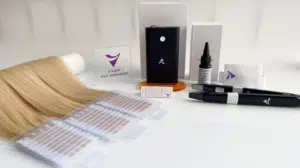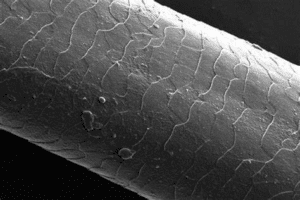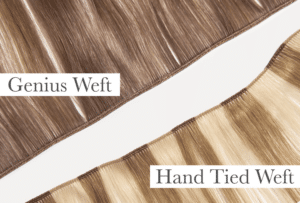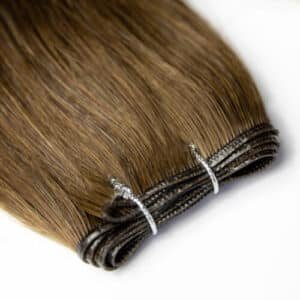Thinking about jumping into the pool with your clip-ins still on? Hold on—there’s more risk than you might expect.
You should avoid swimming with clip-in extensions. They are not water-safe, can slip out, get tangled, and may shorten the lifespan of the hair—especially if they’re made from full cuticle human hair.
Before you pack your hair extensions for that beach vacation, let’s break down the facts. We’ll go into safety, risks, recovery tips, and better alternatives.

Is It Safe to Swim With Clip-In Extensions?
Tempted to leave your clip-ins on while swimming?
It’s not safe to swim with clip-in hair extensions. Water weakens their grip, causes matting, and may lead to slippage or damage.
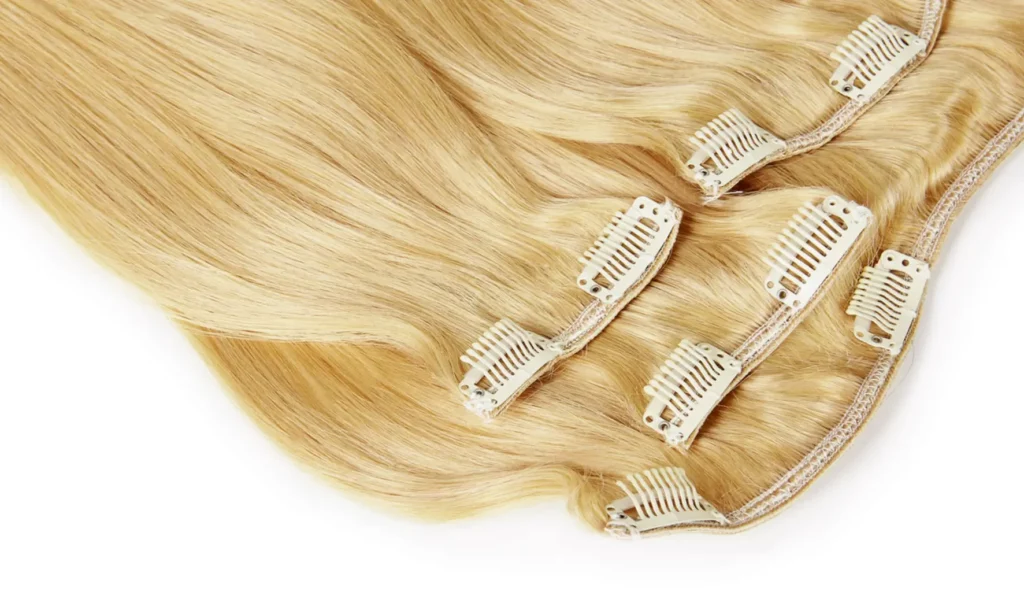
Clip-in hair extensions are meant to be temporary and removable. The metal clips used to secure the wefts are not designed for exposure to water, especially chlorinated pool water or saltwater. Moisture can loosen the clips, and worse—make them rust over time.
The hair itself, if it’s full cuticle human hair, is vulnerable to drying out. Water exposure can strip natural oils and make it coarse or prone to breakage. Synthetic clip-ins can become matted or lose their shape completely.
If your client swims with clip-ins, they risk:
- Slipping out mid-swim
- Tangled knots that are hard to fix
- Rusted clips that damage natural hair
- Permanent frizz or dryness
We always advise stylists and customers to remove clip-ins before entering water.
What Happens If You Accidentally Swim With Clip-Ins?
Forgot to remove your clip-ins before diving in?
If you accidentally swim with clip-ins, rinse them immediately with clean water, deep condition them, and let them air dry flat.

It happens. If you or your client ends up swimming with clip-ins, take these steps immediately:
Step-by-Step Recovery Guide
- Remove the extensions carefully – Don’t tug. Use both hands to unclasp gently.
- Rinse with clean cold water – Flush out chlorine or salt.
- Apply a deep conditioner – Let it sit for 30 minutes. Rinse thoroughly.
- Detangle with a loop brush – Start from ends and work up.
- Lay flat to air dry – Never twist, squeeze, or hang while dripping.
This won’t guarantee full recovery, but it will reduce long-term damage. If the extensions were synthetic, the hair may be permanently affected.
What Hair Extensions Are Safe for Swimming?
Need a water-safe extension option?
Keratin, hand-tied wefts, or tape-ins are more secure and swim-safe compared to clip-ins.
Some hair extensions are semi-permanent and attach more securely to natural hair, making them better for active lifestyles:
| Extension Type | Swim-Safe | Pros | Cons |
|---|---|---|---|
| Clip-In | ❌ | Easy to apply/remove | Slips, tangles, rust |
| Tape-In | ⚠️ | Semi-permanent, lightweight | May loosen in water |
| Keratin Bond (U Tip) | ✅ | Strong hold, long wear | Not reusable, heat required |
| Hand-Tied Weft | ✅ | Natural blend, flexible | Needs pro installation |
| Halo | ❌ | No damage, easy removal | Not secure in water |
If your client plans to swim regularly, suggest keratin or hand-tied options. Emphasize full cuticle hair for durability.
How Do You Protect Hair Extensions at the Beach or Pool?
Want to minimize damage even if you wear extensions near water?
Use a protective style, rinse hair before swimming, and apply a leave-in conditioner or serum beforehand.

Even if you’re not wearing clip-ins in the water, exposure to sun, sand, and humidity can still affect them. Here are simple tips to protect any extensions:
Before Swimming
- Apply a leave-in conditioner or UV hair protectant
- Tie hair into a low braid or bun
- Use a silk or waterproof head wrap
- Pre-rinse with clean water so the hair soaks up less chlorine or salt
After Swimming
- Wash with a sulfate-free shampoo
- Apply a deep conditioning mask
- Let hair air dry naturally
- Detangle gently
Remind clients: the better they care for the extensions before and after exposure, the longer they’ll last.
Can You Do Water Sports or Activities With Clip-Ins?
Thinking about surfing or boating with your clip-ins in?
It’s risky. High-motion water activities increase the chance of clip-ins falling out or getting damaged.
Water activities like surfing, diving, jet skiing, or even beach volleyball put too much stress on unsecured clip-in extensions. Movement, splash, and wind all tug on the clips. Most are not made to hold under such conditions.
Stylists should educate their clients:
- Remove clip-ins before activities
- Switch to keratin bonds for long trips
- Pack a storage pouch for reapplication post-activity
For adventurous clients, comfort and confidence come from secure methods, not temporary ones.

My Opinion
As a manufacturer, I’ve seen so many people waste beautiful clip-in extensions by wearing them into pools or oceans. Clip-ins are meant for style—not sports. I always advise my wholesale clients to educate their buyers clearly: remove clip-ins before swimming. It saves the product and builds long-term trust.
FAQ
Q: Can I wear clip-ins to the beach if I don’t swim?
A: Yes, but keep them protected from sun, wind, and sand.
Q: Can chlorine change the color of clip-in extensions?
A: Yes, especially if they are colored or light blonde.
Q: Is there a waterproof version of clip-ins?
A: No. Clip-ins are not designed to withstand water.
Q: Can I wear a swim cap over clip-in extensions?
A: Technically yes, but it’s uncomfortable and may still shift or damage them.
Q: How do I pack clip-ins for travel?
A: Use a silk pouch or a flat storage box. Always brush and dry them before storing.
Q: What’s the best extension for vacation?
A: Tape-ins or keratin tips made from full cuticle hair.
Q: Do metal clips rust from pool water?
A: Yes. Chlorine and salt can cause rust, which ruins the clips and stains hair.
Q: Can I curl my clip-ins after they dry from swimming?
A: Yes, but only if they are full cuticle human hair and fully dry.
Conclusion
Clip-ins and water don’t mix. Remove them before swimming to protect the quality, longevity, and appearance of your hair extensions.

